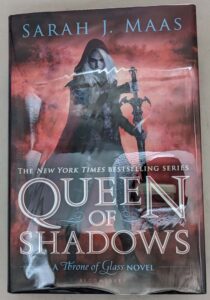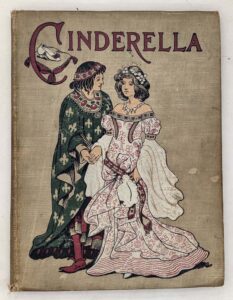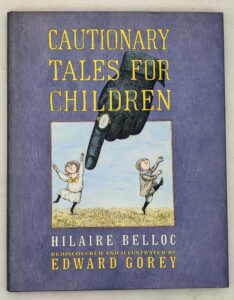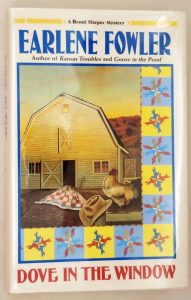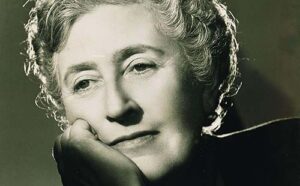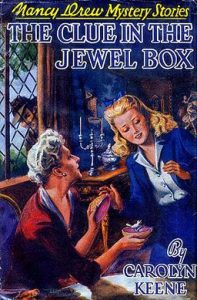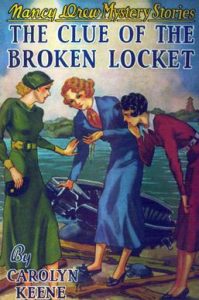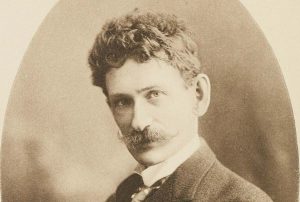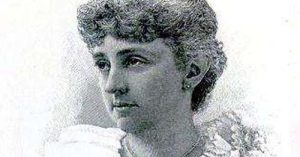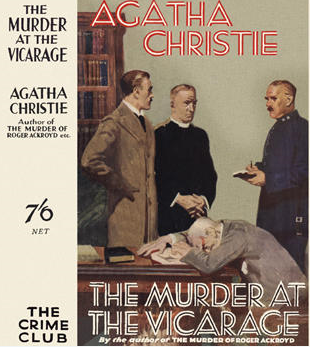
The Murder at the Vicarage is a work of detective fiction by British writer Agatha Christie, first published in the UK by the Collins Crime Club in October 1930 and in the US by Dodd, Mead and Company later in the same year. The UK edition retailed at seven shillings and sixpence and the US edition at $2.00.
It is the first novel to feature the character of Miss Marple and her village of St Mary Mead. This first look at St Mary Mead led a reviewer in 1990 to ask why these are called cosy mysteries: “Our first glimpse of St Mary Mead, a hotbed of burglary, impersonation, adultery and ultimately murder. What is it precisely that people find so cosy about such stories?”
The character had previously appeared in short stories published in magazines starting in December 1927. These earlier stories were collected in book form in The Thirteen Problems in 1932.
References to other works
The vicar and his wife, Leonard and Griselda Clement, who make their first appearance in this novel, continue to appear in Miss Marple stories. Notably, they feature in The Body in the Library (1942) along with Slack and Melchett, and 4.50 from Paddington (1957).
The character of Miss Marple had previously appeared in short stories published in magazines starting in December 1927. These earlier stories were collected in book form in The Thirteen Problems in 1932.
Plot Summary
[SPOILER ALERT]
The Reverend Leonard Clement, the vicar of St Mary Mead, narrates the story. He lives with his much younger wife Griselda and their nephew Dennis. Colonel Lucius Protheroe, Clement’s churchwarden, is a wealthy, abrasive man who also serves as the local magistrate, and is widely disliked in the village. At dinner one evening, Clement offhandedly remarks that anyone who killed Protheroe would be doing the world a favour.
One day Clement encounters Protheroe’s wife, Anne, embracing Lawrence Redding, a young visiting artist; while promising them that he will not reveal their affair, he advises Redding to leave the village at once. The next day, Clement is scheduled to meet with Protheroe to go over irregularities in the church accounts. Clement is called away to a farm to visit a dying parishioner, but learns that the man has recovered, and that nobody actually asked for him. Upon returning home, Clement encounters a distressed Redding at the gate to the vicarage, then discovers Colonel Protheroe dead at the writing desk in his study. He summons Dr Haydock, who pronounces that Protheroe was killed by a gunshot to the back of the head.
The police, led by Colonel Melchett and Inspector Slack, are confounded by several details, including a note left by Protheroe that seems to conflict with Haydock’s opinion of the time of death, and some witnesses claiming to have heard a second shot. News spreads quickly, and both Lawrence Redding and Anne Protheroe confess to the murder. However, both are exonerated; Redding because he insists on an inaccurate time of death, and Anne because Miss Marple clearly saw that she was not carrying a pistol. Other suspects include Archer, a man treated harshly by Protheroe for poaching; Mrs Lestrange, a mysterious woman who recently appeared in the village; Dr Stone, an archaeologist excavating a barrow on Protheroe’s land; and Stone’s young assistant, Miss Cram.
Miss Marple tells Clement she has a list of seven possible suspects in mind. Miss Marple sees Miss Cram carrying a suitcase into the woods at midnight, which Clement later finds, along with a small crystal of picric acid. The suitcase proves to contain valuable silver belonging to the Protheroes, and “Dr Stone” turns out to be an impostor, having stolen the identity of a real archaeologist and replaced the Protheroes’ belongings with replicas.
Reporters descend on the village as other strange occurrences take place. Mrs Price Ridley receives a threatening phone call, and Anne Protheroe discovers a portrait in spare room slashed to pieces with a knife. A police handwriting expert examines the victim’s note and determines that Colonel Protheroe did not write it. Clement is inspired to give a far more vigorous sermon than usual, after which he receives a call from Hawes, his sickly curate, who says he has something to confess.
Clement arrives at Hawes’s rooms to find him dying from an overdose. He discovers the real note Protheroe was writing when he was killed, which reveals that Hawes was responsible for stealing money from the church accounts. Melchett arrives and calls Dr Haydock, but the operator accidentally connects him to Miss Marple, who arrives to see if she can help.
While Haydock takes Hawes to a hospital, Miss Marple explains her theory about the true murderer. Her seven suspects are revealed to be Archer; Mary, the Clements’ maid, who had the opportunity; Lettice Protheroe, the Colonel’s daughter, who could not stand him; Dennis, whose alibi about a tennis party failed to hold up; either Hawes or Clement, to prevent the Colonel from investigating the church accounts; or Griselda, who is revealed to have returned on an earlier train the day of the murder. However, none of them are guilty.
Miss Marple believes the true killers to be Lawrence Redding and Anne Protheroe. In love with Anne, Redding decided they could be together only if he removed her husband. On the pretext of seeking advice from Clement, he left his pistol in a potted plant holder at the vicarage. He then planted the picric acid crystal in the woods near the vicarage, rigging it to explode and create a “second gunshot” that would confuse any witnesses. In the evening, Redding placed the false call to Clement to get him out of the house, while Anne walked past Miss Marple’s home without a handbag in close-fitting clothing to show that she was not carrying a gun. She retrieved the pistol (which had been fitted with a silencer), killed her husband, and left the vicarage; Redding then entered, stole the note incriminating Hawes, and planted his own note falsifying the time of death.
Both conspirators confessed to the crime with obvious falsehoods in their stories, appearing to exonerate each other. Redding drugged Hawes and planted the Colonel’s note to make it appear as though Hawes committed suicide out of guilt. Fortunately, Dr Haydock saves the life of Hawes. Miss Marple proposes a trap which tricks Redding into incriminating himself; he and Anne are arrested by Inspector Slack’s men.
The ending wraps up all loose ends. Lettice reveals that Mrs Lestrange is her mother, Colonel Protheroe’s first wife, who is terminally ill; Lettice destroyed the portrait of Lestrange in Protheroe’s house so the police would not suspect her. The two depart so that Lestrange can spend her last days travelling the world. Miss Cram is revealed to have known nothing about the false Dr Stone’s plot, and Griselda and Dennis confess to having threatened Mrs Price Ridley as a practical joke. Griselda reveals that she is pregnant, which Miss Marple deduced.
Alongside the murder mystery plot, the novel takes time to consider alternative perspectives on the idea of crime. Miss Marple’s nephew, Raymond West, attempts to solve the crime via Freudian psychoanalysis, while Dr Haydock expresses his view that crime is a disease that will soon be solved by doctors instead of police.
Publication history
- 1930, Collins Crime Club (London), October 1930, Hardcover, 256 pp
- 1930, Dodd Mead and Company (New York), 1930, Hardcover, 319 pp
- 1948, Penguin Books, Paperback, (Penguin number 686), 255 pp
- 1948, Dell Books (New York), Paperback, 223 pp
- 1961, Fontana Books (Imprint of HarperCollins), Paperback, 191 pp
The novel was first serialised in the US in the Chicago Tribune in fifty-five instalments from Monday, 18 August to Monday, 20 October 1930.
The Murder at the Vicarage – First Edition Book Identification Guide
The books are listed in the order of publication. While the majority of Agatha Christie’s books were first published in the UK. There are many titles that were first published in the US. The title of the book may differs from the UK edition in some cases.
| Year | Title | Publisher | First edition/printing identification points |
|---|---|---|---|
| 1930 | The Murder at the Vicarage | William Collins & Sons, London, [1930] | First edition. "Copyright, 1930" stated on the copyright page. No statement of later printings. Black cloth lettered in orange. Price 7/6. |
| 1930 | The Murder at the Vicarage | Dodd, Mead & Co, NY, 1930 | First American edition. Date on the title & copyright page matches. No statement of later printings. Decorative grreen cloth, letterd in dark green. Earliest issue dust jacket had no price on front flap , latter priced at $2.00. Price $ 2.00 |
Note about Book Club Editions (BCE) and reprints:
UK: You can see statements of later reprint dates or of book club on the copyright page.
US: The US reprint publishers usually use the same sheets as the first edition and are harder to identify by looking at the title page or the copyright page. One may identify a BCE by looking at the DJ, which doesn’t have a price on top of the front flap and a “Book Club Edition” imprint at the bottom. If the dust jacked is clipped at both the top/bottom of the front flap. You can safely assume it’s a BCE . If the book is missing the dust jacket. Later BCE editions can be identified by its plain boards, while first printings are issued in quarter cloth.
Please refer to the gallery for detailed images of true first edition bindings and dust jackets.
The Murder at the Vicarage – First Edition Dust Jacket Identification Guide
First edition bindings and various dust jacket printings identification.
